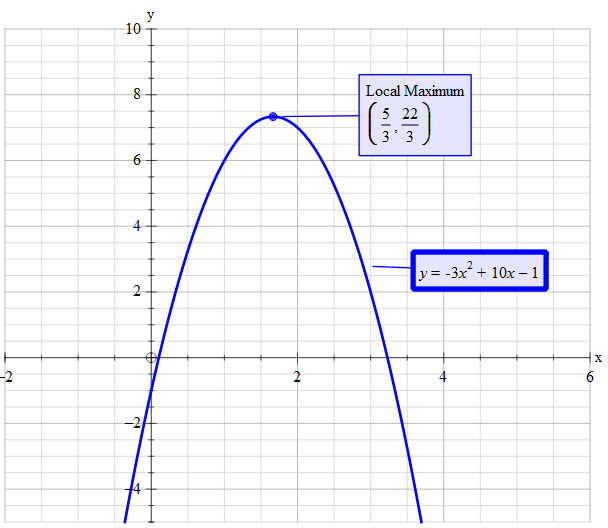How do you determine whether the graph of #y = −3x^2 + 10x − 1# opens up or down and whether it has a maximum or minimum point?
2 Answers
As the given equation has
Explanation:
If the coefficient of
If the coefficient of the
As the given equation has
~~~~~~~~~~~~~~~~~~~~~~~~~~~~~~~~~~~~~~~~~~~~~~~~~~~
Write the equation as
Then the

It depends on the sign of
Explanation:
Asking whether a parabola opens up or down, and whether it has a maximum or minimum point, is actually the same question:
It all depends on the sign of the
If
(Smiling face parabola)
If
(Sad face parabola)
So, just look at the coefficient of


